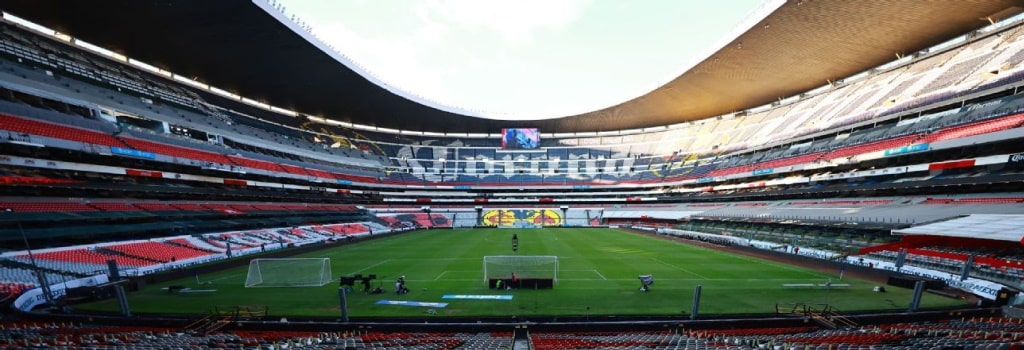

Football is a global cultural obsession, beloved by millions. From the streets of Brazil to the fields of Europe, football has become a unifying force that brings people together. And no better place captures the spirit of football than a stadium.
Over time, football stadiums have become powerful symbols of national identity, cultural pride, and sporting excellence. From the iconic Wembley Stadium in London to the modern Khalifa International Stadium in Qatar, each arena has its captivating narrative.
Moreover, football ignites passion and excitement among fans worldwide. The energy surrounding significant matches is unequalled, and stadiums are at the heart of the action. For fans who crave extra excitement, numerous betting platforms in Australia, including the Playup betting site, offer a chance to place bets on these matches and win big. Placing bets further amplifies the euphoric experience of watching a beautiful game, making it even more thrilling.
So, which stadiums have had the honour of hosting the biggest matches? Let's take a closer look.
Estadio Azteca is a stunning stadium and emblem of national pride reflecting Mexico's profound love for football. Inaugurated in 1966, it remains the largest stadium in Mexico and the third-largest globally. Two landmark World Cup tournaments punctuate its storied history. In 1970, it hosted the legendary final between Brazil and Italy, where Brazil secured their third World Cup title with a 4-1 victory. The stadium also served as the main venue for the 1986 World Cup, witnessing the unforgettable "Goal of the Century" by Diego Maradona.
The iconic Wembley Stadium in London epitomises football's rich history with its distinctive arch. Constructed in 1923 and refurbished in 2007, Wembley is Europe's second-largest stadium and the UK's largest. Countless epic matches have unfolded within its walls, but perhaps none as significant as the 1966 World Cup Final. England won that game against West Germany, which has remained the only world cup trophy they have till today. Wembley has also hosted numerous Champions League finals, FA Cup finals, and the 2012 Olympics football tournament.
Camp Nou, FC Barcelona's home, is Europe's largest and the world's third-largest football stadium. Officially opened in 1957, it symbolises Catalan identity and the club's motto, "More than a club." The stadium has seen everything from the 1982 World Cup semi-final between West Germany and France to the legendary performances of Barcelona's greatest players. Additionally, Camp Nou hosted the 1999 Champions League final, where Manchester United achieved a remarkable last-minute comeback against Bayern Munich.
The Estadio do Maracana in Rio de Janeiro symbolises Brazil's undying love for football. Built-in 1950 to host the World Cup, though its capacity has reduced over the years, Maracana remains an emblem of Brazilian football. Its most memorable match is heartbreaking: the 1950 World Cup final between Uruguay and Brazil. In a shock, Uruguay defeated the favoured Brazilian team 2-1, leaving the nation stunned. Despite this painful memory, Maracana has hosted major matches, including the 2014 World Cup final and the 2016 Olympics football tournament.
The Allianz Arena in Munich is a true work of modern architectural art with a striking, colour-changing exterior. Unveiled in 2005, this stadium is FC Bayern Munich's home and one of the planet's most legendary arenas. The Allianz Arena has hosted numerous competitions, including the famous 2012 Champions League final between Bayern and Chelsea. The match culminated in a thrilling penalty shootout, with Chelsea emerging victorious and claiming their first Champions League championship.
The Santiago Bernabeu is the legendary home of Spanish football giants Real Madrid. Opened in 1947 and renovated to become a modern, world-class stadium, it has hosted various historical events and some of the sport's greatest players. Its most unforgettable moment was the 2010 Champions League final, where Inter Milan triumphed over Bayern Munich 2-0.
The Signal Iduna Park is Germany's largest stadium and Borussia Dortmund's home. Inaugurated in 1974 and renovated with a retractable roof, the venue has witnessed football's most memorable moments, notably the 1997 Champions League final featuring Borussia Dortmund and Juventus. Dortmund emerged victorious, defeating Juventus 3-1 and capturing their first Champions League championship. The standing-room-only area, the Yellow Wall, holds over 24,000 fans and is renowned worldwide as one of the most legendary fan sections.
Old Trafford has a lengthy and distinguished history that dates back to 1910, when it was first opened. Since then, the stadium has undergone countless upgrades and renovations to transform into a top-grade venue that attracts admiration.
The stadium has hosted countless football matches, including the 1968 European Cup final, which they won by crushing Benfica with a remarkable 4-1 in an exceptional display of football. This victory was a major accomplishment for the club and cemented its status as a premier football giant. Aside from hosting the 1968 European Cup final, Old Trafford has been the venue for several international matches, FA Cup finals, and the Champions League.
All good things have to come to an end, and the same unfortunately has to be said for football stadiums too. This article looks at the grounds which are soon to host their last match, the stadiums whose days are numbered and where fans will be watching their football from next.
An in-depth look at the biggest football attendances ever recorded, from the 1950 World Cup to pre-season friendlies in the States and the Scottish ground with dozens of 100,000+ attendances
The 91 biggest football stadiums in Europe. From Manchester to Munich, Villa Park to Valencia - each one with a capacity over 40,000
Tony Incenzo has been to over 2,000 football grounds - is he the world's barmiest football fan? Read about his love for Non-League football and groundhopping obsession, including watching a match in prison!
